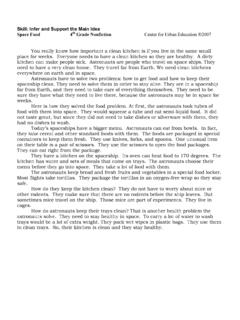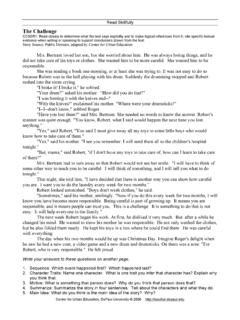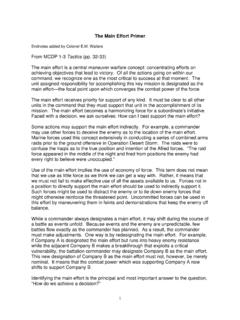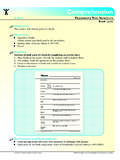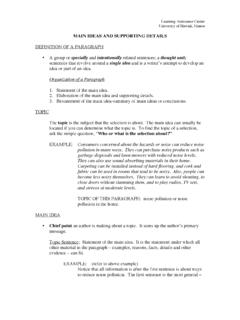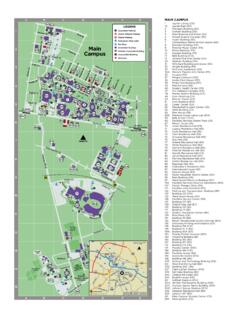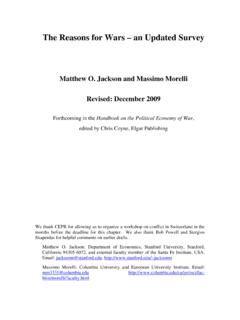Transcription of Grade 5 Main Idea - DePaul University
1 Skill: Infer and Support the main Idea Animal Studies 5th Grade Nonfiction Source: Public Domain, adapted by Center for Urban Education, may be used with citation. Animals are wonderful. If you look closely at how they live, you will find many surprises. It is hard to look closely at insects, because they are very small. Plus, many of them fly away when you come near. But if you have a chance to watch them, you will discover how they live. Watching animals is a job that scientists do, called making observations. They have learned a lot about animals. Scientists learn about tiny animals, and they have studied insects. They found that insects have tools, and they use those tools to survive. For example, they learned about the sawfly. This is just one animal they have studied. They call it the sawfly because it possesses a kind of saw. It's not a real saw, but it resembles one, and it works like one.
2 It is actually a part of the sawfly s anatomy. The sawfly uses the saw to make places where the eggs will be safe. It saws at plants in order to create a space where eggs can go. Afterward, the sawfly does something very special. It makes a sort of homemade glue that fastens the eggs where they are laid. We are not exactly sure how it does that, but if you can watch the sawfly you will see this happen. Some insects have cutting instruments that work in a similar way to scissors. The poppy-bee is one of these insects. It is a bee that makes its home in wood. This bee has a boring tool, and it uses the tool to bore into old wood. It looks like a tool that a carpenter might use. Carpenters make things out of wood, and like carpenters, poppy-bees makes their nests out of wood. In addition to insects, scientists observe birds, too. They have studied birds using their bills to get what they need.
3 Some birds use their bills to cut into wood. They have sharp bills, and are able to cut a hole in a tree. So, they will use their sharp bills to drill a hole to get inside the tree where insects live, and then they eat the insects. Every animal is amazing. Even dogs and cats can surprise you. The more you observe animals, the more you will learn. Nature is full of surprises. Every part of every animal has a purpose. Scientists learn more about them every day. Nature is a wonderful part of our world. Questions developed by Center for Urban Education for use by Chicago Public Schools 2008-2009. Directions: Choose the best answer for each question. 1. What is the main idea of the first paragraph? a. Insects are small. b. You need to be careful to watch insects. c. You can learn by observing animals. d. It is hard to study insects. 2. What is the main idea of the second paragraph?
4 A. Scientists observe animals. b. Insects have tools. c. The sawfly has a kind of saw. d. Sawflies are like parrots. 3. What is the main idea of the whole passage? a. Animals are wonderful. b. Birds eat insects. c. Scientists learn about animals. d. Animals do many things. 4. What is another good title for this passage? a. How Insects Live b. Insects and Birds c. Learning about Nature d. Tools of Insects 5. Write your own answer to this question. What is the main idea of the last paragraph? _____ TEACHER NOTES: Develop Students Skills: Exercise Thinking These questions have not been validated, so decisions about student s achievement should not be made based on their responses. They are intended to exercise skills. Recommended activities include: students work in pairs to choose the best response; give students the questions without the responses so they generate their own answers; students make up additional questions; students make up questions like these for another passage.
5 Answers: You can remove this answer key and then give it to students and ask them to figure out the basis for the correct response. Item 1 2 3 4 Answer c b c c Question 5 is open-ended. Here is a suggested response. 5. Answers may include that scientists learn about nature. Skill: Infer and Support the main Idea Mousie 5th Grade Fiction Source: Public Domain, adapted by Center for Urban Education, may be used with citation. Darrell Burton was always very careful. He listened to his teacher, he studied diligently, and he did all of his homework well. Other students sometimes taunted him and said, Don t study so hard. You re such a book-head. They called him Book-head, but Darrell didn t mind. He loved to learn. This is a story about how he learned science right at home. In fact, he learned about science from experimenting with real animals.
6 Much like scientists observe nature, Darrell did, too. He formed a hypothesis and discovered it to be true. Then he continued to study so he could learn more. One night, Darrell woke to a strange noise coming from his closet. He stepped out of bed, crossed the floor in his bare feet, and carefully opened his closet door. The noise stopped instantly. "Ah!" exclaimed Darrell, "I knew it had to be mice making those noises. How I wish I could catch them!" The next morning at breakfast, he told his mother about the noises he had heard, and how he was confident the sounds were coming from mice. "I will get you a mouse trap," his mother insisted. "I don't want the kind of trap that kills the mice; I only want to catch them so that I can tame them," replied Darrell. His mother laughed and told him that after he had tamed his mice, he had better keep them well out of her way.
7 The trap was set, the mice were caught, and sure enough, in just a short time, they were so tame that they would eat right from Darrell s hand. He made a little house for them, and kept in it his bedroom. Whenever he went out, he always shut the door carefully so the mice could not escape. The other students at school started to call Darrell Mousie because he told them about his mice. He didn t mind what they said. He read about mice, and he discovered that most of them could live only a short period of time. In fact, most mice might not even live a whole year. This made Darrell resolve to take even greater care of them. He acted like a scientist. He studied the mice closely, but he never gave them names. Instead, he just called them Mouse 1, Mouse 2, and Mouse 3. He took such good care of them that they lived more than a year. When one mouse died, Darrell would set the trap again to get another one.
8 When Darrell left college, he brought his mice with him. He studied biology, and his college professors said he was a great natural scientist. He learned much more about science. Later, Darrel became a zoologist. That is someone who studies animal life. Today, he is Dr. Darrell Burton, and he works at the zoo. He is in charge of caring for all the animals, including the mice. Some of the mice are exotic creatures from distant places. When he sees them, he smiles. Questions developed by Center for Urban Education for use by Chicago Public Schools 2008-2009. Directions: Choose the best answer for each question. 6. What is the main idea of the first paragraph? a. Kids called Darrell names. b. Darrell was a good student. c. Darrell read books. d. Darrell is kind. 7. What is the main idea of the second paragraph? a. Darrell is a scientist.
9 B. Darrell learned from nature. c. Darrell stayed home from school. d. Darrell liked animals. 8. What is the main idea of the whole passage? a. Darrell went to college. b. Darrell liked mice. c. Darrell studied mice. d. Darrell was a scientist. 9. What is another good title for the passage? a. The Good Student b. The Mouse Keeper c. Working at School d. Becoming a Zoologist 10. Write your own answer to this question. How do you figure out the main idea of a passage? _____ _____ TEACHER NOTES: Develop Students Skills: Exercise Thinking These questions have not been validated, so decisions about student s achievement should not be made based on their responses. They are intended to exercise skills. Recommended activities include: students work in pairs to choose the best response; give students the questions without the responses so they generate their own answers; students make up additional questions; students make up questions like these for another passage.
10 Answers: You can remove this answer key and then give it to students and ask them to figure out the basis for the correct response. Item 6 7 8 9 Answer b b d d Question 10 is open-ended. Here is a suggested response. 10. Answers should include look at the title, look at the events or information.
